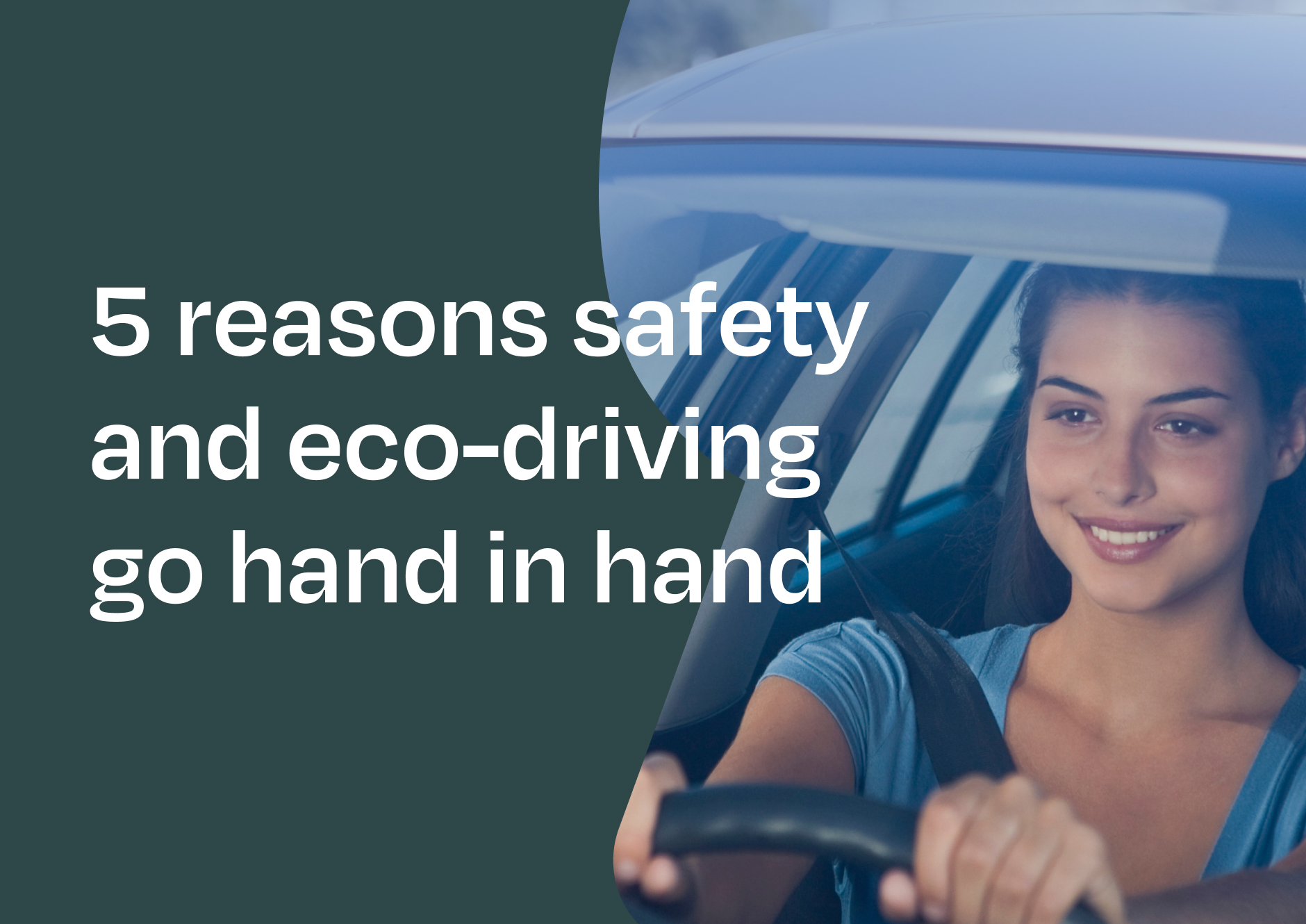


Did you know that driving for work is the most dangerous work activity many people do? And that transport is the main cause of air pollution in cities? Driver safety and eco-driving are intrinsically linked and encouraging drivers to adopt smarter behaviors helps to achieve safer, cleaner roads. Here’s why.
By helping to cut crashes in your organization you’re not only helping to save lives, reduce injuries and minimize the burden of lost workdays and associated expenses, but you’re also helping to save the environment. How? Because some of the potential impacts of a crash are:
Speed is a major contributing factor in road traffic crashes, and it’s also linked to an increase in fuel use and CO2 emissions. Any speed gain is an acceleration, no matter how small, so encouraging drivers to plan and make good use of every speed increase helps prioritize both safety and sustainability.
Smooth driving is a smart technique for avoiding collisions and helps to reduce fuel use and emissions. A common type of unsafe driving behavior is putting huge effort into chasing the next traffic light, only to have to hit the brakes and sit waiting for the light to turn green! Driving smoothly and looking well ahead to anticipate what’s coming up helps drivers stay in control and saves both time and fuel.
Leaving a “safety space” around their vehicle can help drivers to avoid trouble on the road. A three-second following distance is ideal in good conditions to give drivers time to react to situations up ahead. Decreasing speed gradually instead of braking harshly helps to avoid collisions, and unnecessary fuel use.
Maintaining intended speed is of utmost importance for fuel economy. Mind wandering and lack of focus can cause speed variation up and down, causing unnecessary accelerations, hence increasing fuel consumption. Distraction is also a major cause of collisions so encouraging drivers to focus on the drive helps to create safer, cleaner roads.
The FIA Smart Driving Challenge (SDC) is a worldwide challenge created by the FIA in collaboration with Greater Than to encourage everyday drivers to adopt smarter, cleaner and safer driving behaviors.
Joining the FIA SDC gives your organization the opportunity to reduce crashes, CO2 emissions and fuel consumption within your company. It also provides company-wide reporting into safety and eco-driving regardless of vehicle type or location, so you can easily identify the drivers who are increasing your company’s risk level, and fuel consumption.
Read more about the challenge here.